Sign on, Zoom in, Drop Out: Pandemic Sparks Fears That Without Sports and Other Activities, Students Will Disengage from School
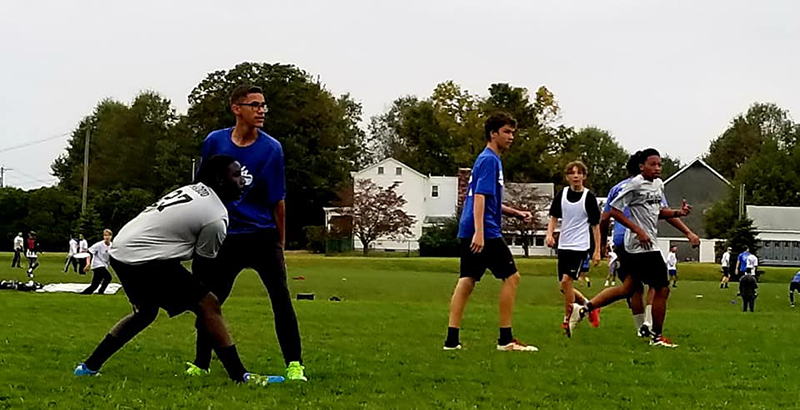
This fall at Philadelphia’s Science Leadership Academy, the high school’s storied Ultimate Frisbee teams are “practicing” via Zoom. The team has ranked in the top 10 statewide for the past three years and in 2018 ranked among the top 25 teams nationally. But as schools citywide operate virtually, SLA athletes are reduced to sharing virtual workouts, chatting remotely with sports nutritionists and strategizing over old game footage.
And no, it’s not very satisfying, said co-captain Anthony Nelson, a senior — friends call him Tone. “I miss my teammates,” he said. “We have a lot of upcoming freshmen who don’t even know how good our team is.”
The widespread loss of school sports this fall, along with activities like drama, band and debate, is ringing alarm bells for educators nationwide, who worry that these activities serve a vital, unspoken purpose: They keep kids engaged in school. The necessity of postponing, minimizing, or canceling them due to Covid-19 puts millions of kids at greater risk of dropping out or falling behind.
Johns Hopkins University education researcher Robert Balfanz, who has studied high school dropouts for decades, said literature on the topic is clear: Having a handful of adults and peers in a school who know and care about a student is key to graduating. Students often find these connections — both to adults and peers — through sports or other extracurriculars.
“It’s in drama, debate and the football team,” he said. “It’s doing something that you think is bigger than yourself.”
Sports and other activities also serve to make school a more welcoming place to many kids who feel they don’t fit in, he said.

“You could argue that on all of those points, losing access to those student activities is pretty important to a kid’s sense of connection to school,” Balfanz said. For educators to be concerned that this will create more disconnection for kids, he said, “is very logical.”
Millions of students this fall are attending virtual school. A poll of more than 1,000 public school parents in September found that 58 percent of students are learning entirely online, perhaps far more for students of color. Since the pandemic began, educators have focused closely on learning loss, the so-called “Covid slide.” But as the shutdowns have lingered, attention has turned to a softer, but in some ways, more important target: the loss of engagement that makes students interested in staying in school long enough to learn.
Recent survey findings suggest that students everywhere are spending far less time than usual playing sports. The Aspen Institute’s Sports and Society Program found that young people ages 6 to 18 played just 7.2 hours of sports per week in September, down from 13.6hours before Covid-related closures and social isolation.
The report found that free play, practices and competitions have all “significantly declined.” Time spent on games is down 59 percent, while practice hours are down 54 percent. Both indicators, however, have increased slightly since June. But the authors warned that a growing number of youth — nearly three in 10 — now “have no interest in returning to the primary sport they played pre-pandemic.”
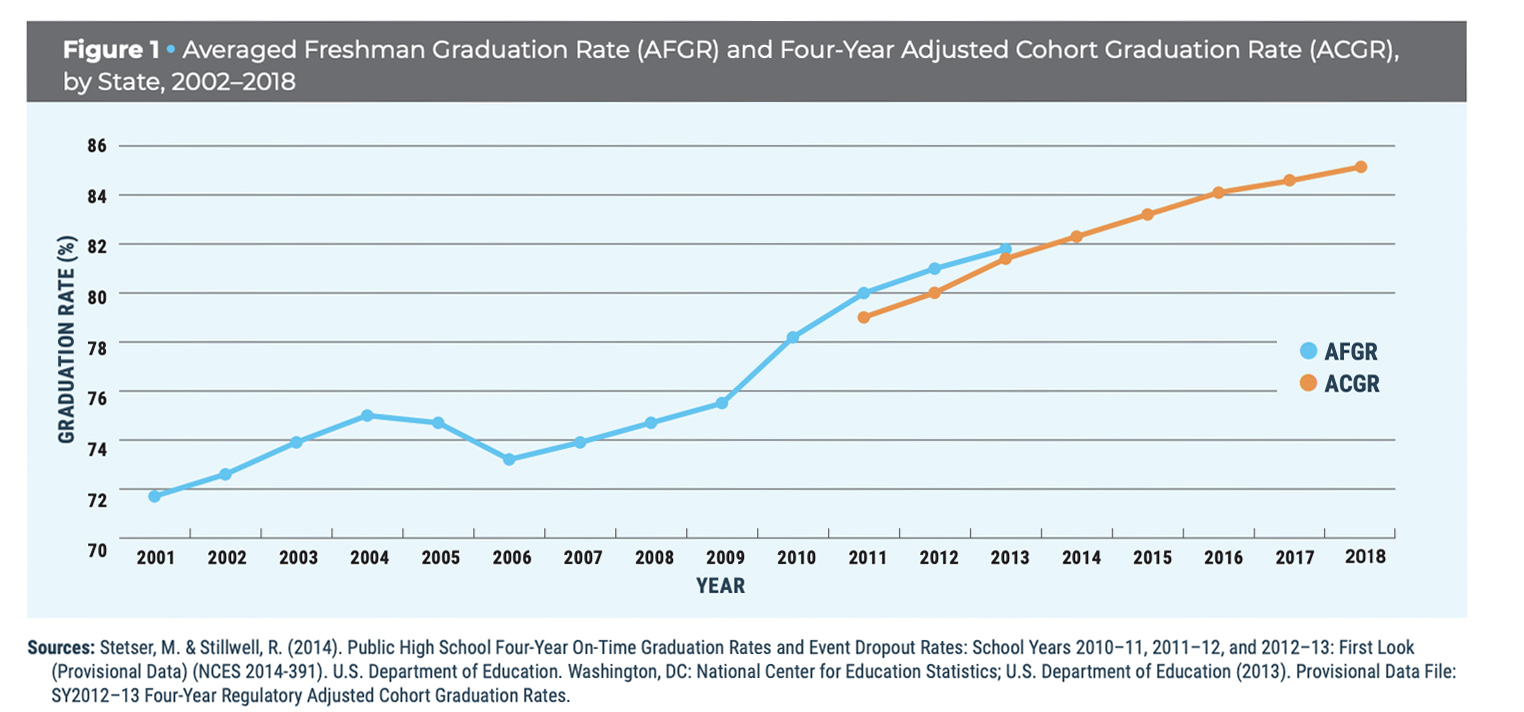
That could have disastrous consequences. Over the past several decades, researchers have found that participating in sports has a direct effect on high school students’ academic performance. Kansas researchers in 2012 found that 80.1 percent of high school athletes in the state had GPAs of 3.0 or higher, 70.5 percent for non-athletes. As far back as 2001, North Carolina researchers found that high school athletes there had an 0.6 percent dropout rate, compared to 10.3 percent for non-athletes.
Douglas Fulton, principal of Freedom High School in suburban Loudoun County, Va., said he’s especially concerned that students this fall are missing out on both the physical and mental health benefits that sports and other activities provide. Giving students “a couple of hours where they’re doing creative problem solving and skill work and actually not thinking about class work and book work” helps them do better in school and feel more connected to it. “It’s just like any of us. If we can go someplace where we can blow off an hour or two and not think about work, we’re actually much better at what we can do workwise.”
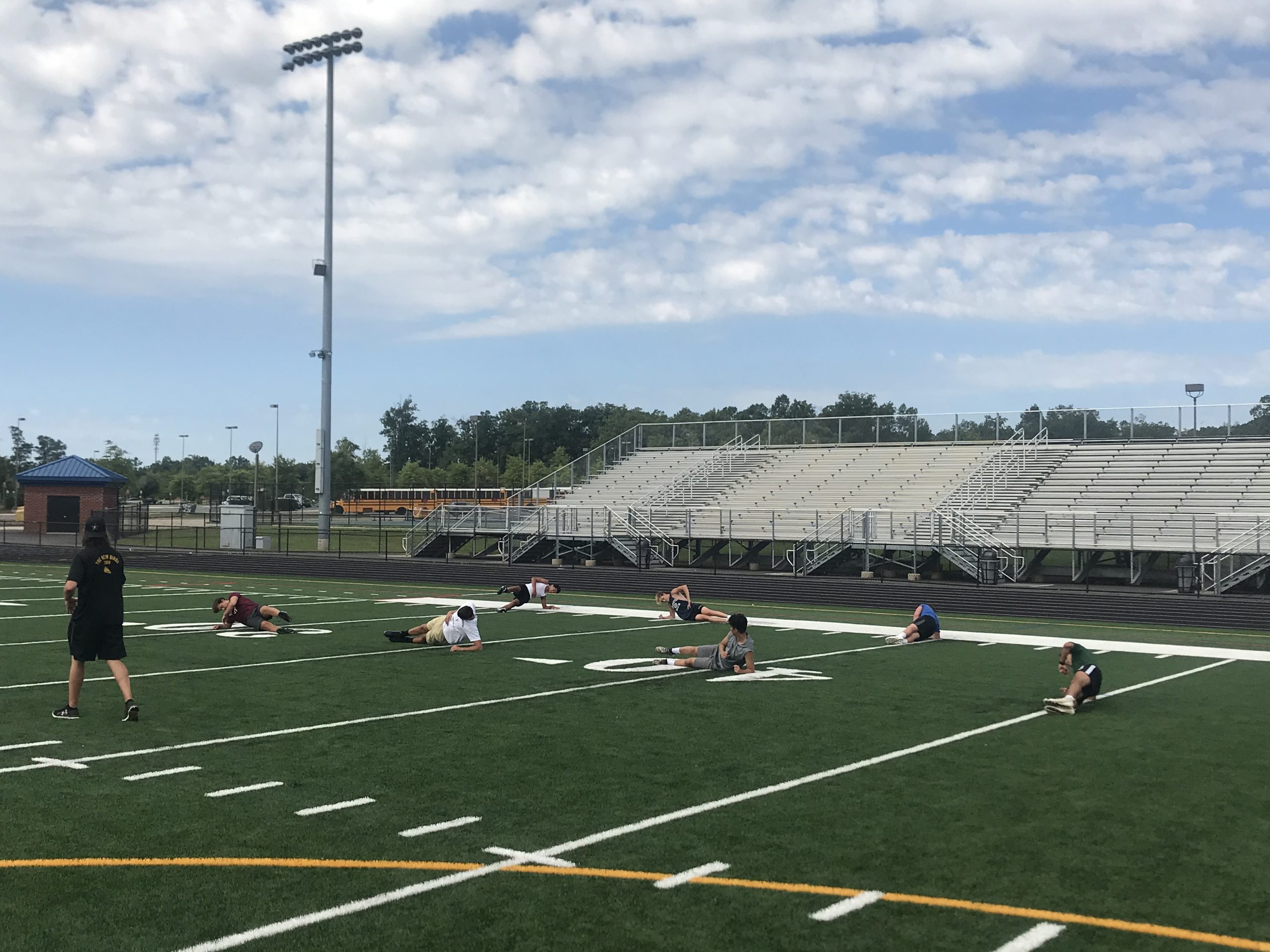
He echoed Nelson’s concerns, saying he’s most worried about his incoming freshmen — research shows this is an especially delicate time in which students often make the decision to drop out or stick around for the next four years to graduate.
For freshmen at Freedom, most didn’t get the chance over the summer to work out with a sports team or rehearse with the marching band. Most years, those who begin their high school career this way “get connected to the high school right away in the summertime, because they go to a program where they’re around 10th, 11th, and 12th graders,” Fulton said. “It’s not segregated by ‘Here’s your freshman football team, volleyball team.’ They’re all together. Those kids actually are better acclimated the first semester of high school than other students, because they get connected to older students right away. We’ve lost that this year.”
Spirit Day on Zoom
The pandemic has thrown a monkey wrench into more than just sports and marching band. For many students, bans on group gatherings and restrictions on travel have reshaped the larger possibilities of their school careers.
Téa Fortune, a student at Garfield High School, a traditional school in Seattle, was supposed to begin her senior year with two jaw-dropping trips – one to Shanghai and another to the American South to study the civil rights movement. Covid canceled both, and her classes are now entirely online.
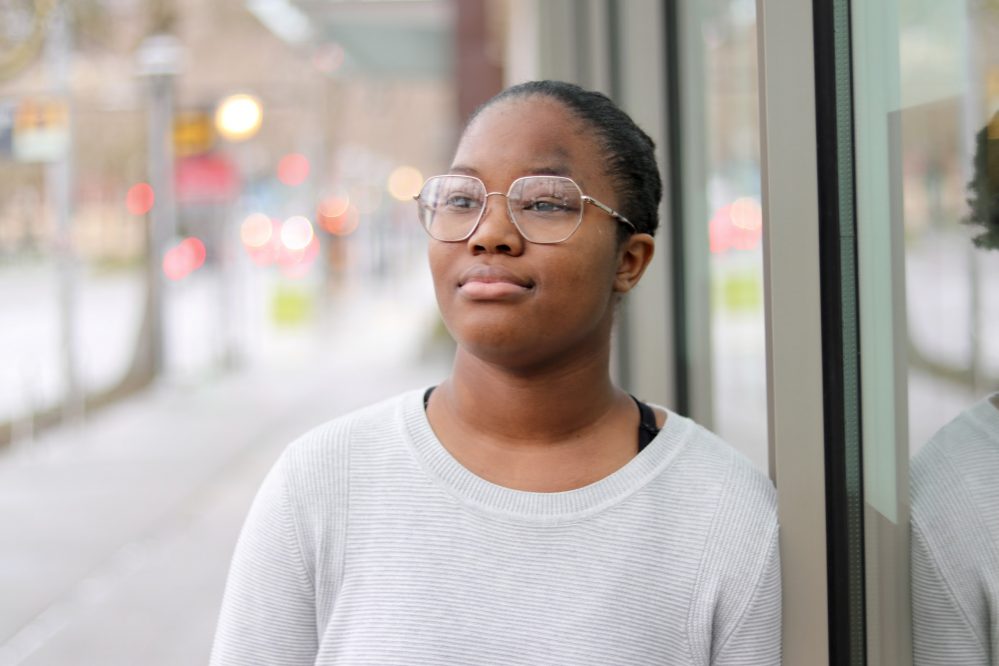
“Not having my friends around has been really hard,” she said.
Fortune is also editor-in-chief of her school’s newspaper, which has gone remote and digital-only, with plans for a twice-monthly email subscribers’ newsletter. For her, dropping out is not an option — she’s already taking college classes, actually — but her senior year is not shaping up as she’d imagined. “Spirit Day is going to be on Zoom,” she said with a little laugh. “It’s going to be interesting.”
Laura Kassner, a Virginia-based senior education researcher at SRI International, noted that the federal government’s What Works Clearinghouse has found strong evidence that offering students “passion projects” that connect schoolwork with college and career success, is effective in preventing dropouts.
A 2017 guide produced by the federal Institute of Education Sciences notes that a personalized learning environment helps build stronger relationships between staff and students and engages students in school. It recommends offering programs that not only connect schoolwork to after high school options, but also help students “build supportive relationships and teach students how to manage challenges.”
As an example, Kassner said a group of high schoolers in Richmond created a kind of mini Zoom school to teach about 20 enrichment classes — yoga, dance, Greek mythology, and the like — to more than 500 younger students.
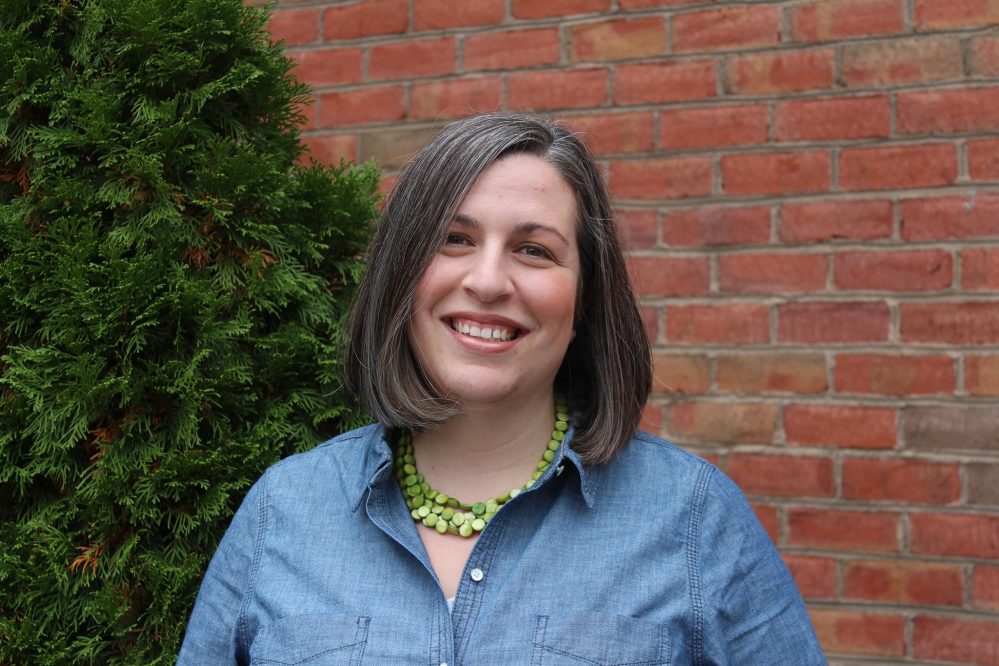
“The young kids got experience with new topics,” she said. And the high schoolers “got an amazing teaching experience and resume builder — and college essay fodder, if you ask me.”
At SLA, a public magnet high school jointly founded by The Franklin Institute, a science museum, and the School District of Philadelphia, perhaps no one is more dissatisfied with the current state of affairs than Ultimate Frisbee varsity head coach Chris Lehmann, who also happens to be SLA’s founding principal. “You’re trying to keep community going, but you can’t play the game,” he said.
All the same, SLA has weathered the crisis well, with a 97 percent attendance rate. “Everybody is showing up and doing their best,” Lehmann said. As he surveys his current crop of students, he doesn’t immediately worry about any dropping out. “There are other years where I know I would have had kids for whom this would have been the thing that broke them,” he said. “This year I’m very lucky. But that doesn’t mean this doesn’t suck for them.”
A well-known, blunt-speaking educator who for years has run a popular conference for teachers, Lehmann champions inquiry- and project-based learning. He said the loss of sports and other activities, which serve as “connective tissue,” has been devastating.
“This hurts kids,” he said.
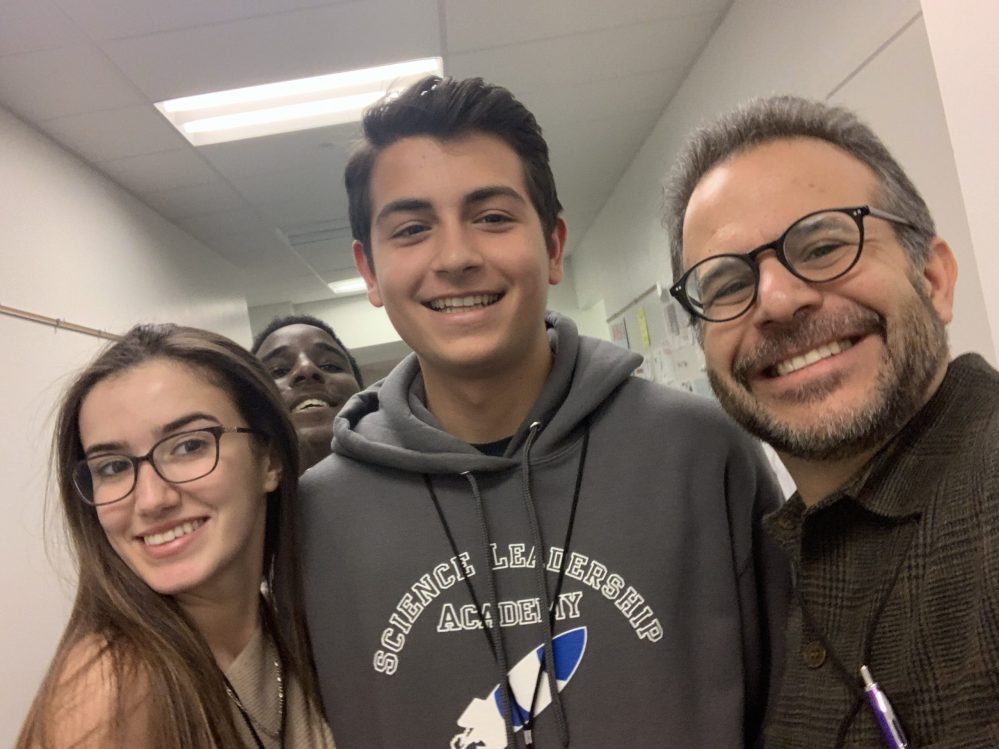
While the city school district doesn’t run the Ultimate Frisbee league, Lehmann noted hopefully that the district plans on what it’s calling a “Return to Play” for school sports, starting with controlled practices in November and shortened seasons for all sports in January. “For me, that means I’ll get to start practicing Ultimate soon with the hope of having a spring season.” he said.
To help keep students engaged, he has reduced the number of virtual class sessions students must attend each week. But he and others remain concerned that remote schooling is stretching many families’ home lives and WiFi capacities to the breaking point, putting those students at a disadvantage.
All the same, he has made one-on-one student/teacher advisory meetings a priority, ensuring that teachers check in with every student for 15 minutes each week. “I think that’s huge. So that adult is checking in on you every single week. ‘What’s going on? What’s good? What’s not good? What do you need? How can we help?’ And I think that was a huge piece of the puzzle for just creating conditions by which nobody can fall through the cracks.”
“They’re going to be losing those kids”
Zoe Siswick, an SLA counselor who also coaches girls’ sports, has tried to keep her athletes engaged by holding a town hall on sports nutrition, bringing in guest speakers, and encouraging students to work out virtually together. Siswick said Lehmann prioritizes connections between adults and students, which acts as a protective barrier against dropping out. But for many Philly students who “do just well enough in school to stay eligible for sports,” this semester may prove disastrous. “In any of these other schools across the city, they’re going to be losing those kids,” she said.
Siswick recalled covering a colleague’s remote class recently during which just two students turned their Zoom cameras on. “It was really depressing,” she said. “You feel like you’re speaking out into outer space. You don’t get that engagement.” A colleague later told her that was par for the course.
Oddly, though, when the class ended, three students who in the past have joined her for lunch in her office each day hung around afterwards … and turned their cameras on when everyone else was gone. “That one little shred of normalcy was like, ‘Oh, my gosh, this almost feels like I remember way back.’”
Margie Castejon Gamez, an SLA senior who plays soccer and is also captain of the girls’ lacrosse team, said she and a group of classmates are developing a student-driven volunteer help line to offer tutoring and support. “Sometimes we don’t have that motivation to be there in class,” she said. “In class you have to be there. But online it’s different.”
Unlike most schools, SLA actually has experience with massive disruption — after it moved from its original building last fall to a new facility, district officials sent students and teachers packing temporarily after the city realized that a years-long project to remove asbestos from air ducts hadn’t been completed. Gamez said the disruption made SLA students experts at negotiating remote schooling. “Now it’s like, ‘I just have to log in, into the class,’” she said. No big deal.
Like the Ultimate Frisbee teams, this fall Gamez’s soccer team is meeting via Zoom, she said. They talk about workouts, diet, and motivation. They also call each other to compare notes.
But she misses being out on the field — in part because she can emotionally let loose. “When I play, I interact with all my teammates and it’s a way that I can scream and no one will judge me.”
Kassner, the SRI researcher, said high school students “have just gotten a huge taste of freedom” during school shutdowns. Giving them something relevant to hold onto now will be vital, or they’ll just check out.
As they look toward helping students make it to graduation, she said, schools should be harnessing peer pressure “in a positive way,” student-to-student, sending a clear, simple message: We’re graduating together.
“The more kids can connect with each other, the better,” she said.
Get stories like these delivered straight to your inbox. Sign up for The 74 Newsletter

;)

